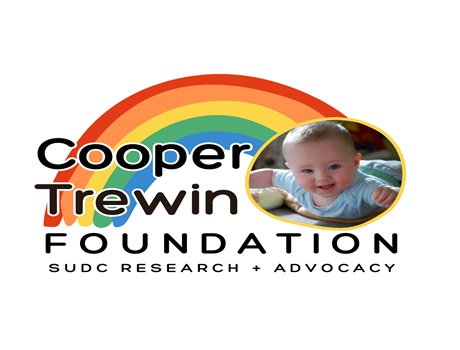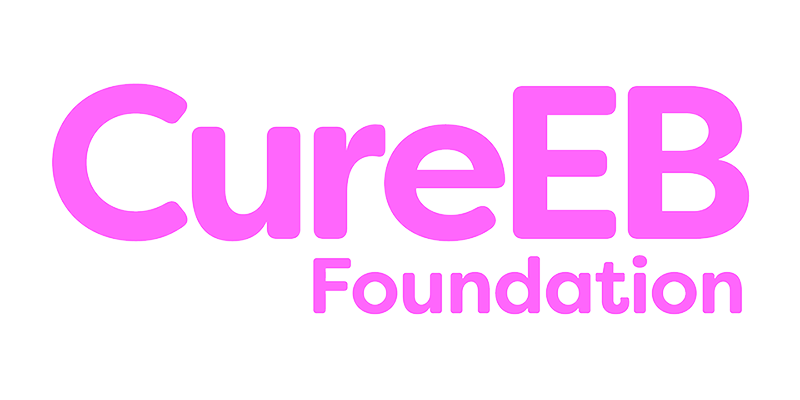Our Charities
DEBRA Australia
DEBRA Australia is a not for profit volunteer based organisation that does not receive any direct Government funding and works tirelessly to support those living with a group of rare skin blistering disease called Epidermolysis Bullosa (EB). DEBRA Australia assists in improving the lives of children and adults living with EB, the debilitating and sometimes fatal condition, by providing necessary support services, medical supplies, aids and equipment, support services, assistance with transition to independent living and research focusing on different aspects of EB.
Epidermolysis Bullosa (EB) is a rare disease whereby the skin blisters and peels at the slightest touch. Living with EB has been likened to living with third degree burns. It is very painful, and sufferers must be bandaged every day with dressings to protect and medicate their wounds. EB is characterised by skin fragility with blister formation occurring spontaneously or following minor trauma. EB can be broadly divided into three major catagories: Simplex, Junctional and Dystropic. These catagories can be further subtyped based on inheritance and clinical features.
It is estimated that there are around 1,000 people in Australia who have some form of EB and over 500,000 worldwide. It occurs in all racial and ethnic groups and affects males and females equally. EB is not always evident at birth. Milder cases of EB may become apparent when a child crawls, walks, runs or when young adults become more physically active.
Click here to find out how our Brighter Days funding helps DEBRA.
Website : www.debra.org.au

COOPER TREWIN FOUNDATION
"Sudden Unexplained Death In Childhood (SUDC) is the sudden and unexpected death of a child over the age of 12 months, which remains unexplained after a thorough case investigation is conducted."
(Krous et al. 2005)
Cooper Trewin Foundation was established after the tragic passing of Cooper Trewin on 6 February 2010, aged 16 months. Cooper passed for no known reason and the foundation was established to support research into the cause of sudden and unexplained death in children.
As a parent who is told by a pathologist after an autopsy that we had a healthy little boy without sickness, injury or disease leaves a lot of unanswered questions. We decided to establish research to try and help find a cause.
Cooper's connection to Brighter Days comes via committee members Jim & Lisa Henwood who heard Cooper's Dad talk at an event, deciding at that very moment to make a difference and help save other families from this same tragedy.
From its humble beginnings, we have been part of this incredible event. We have proudly watched Brighter Days grow into the iconic Australian festival it is today, achieved by the hard work of countless volunteers. Money raised from Brighter Days has been directly credited with saving children lives, assisting the development of the Cooper Trewin Brighter Days Neuroimaging Study, Brighter Days Genetic Screening and a Safe Sleep Program run out of the Bairnsdale Hospital.
Our long term relationship with the Boston Children's Hospital and Harvard Medical School currently has us committed to a $400,000 genetic study utilising Zebrafish. We are making a difference and Cooper is helping to change the world with this research. We would like to thank you for raising funds for such worthwhile charities and keeping Cooper's legacy alive.
Website: www.sudc.com.au

Determining the Prevalence of Sudden and Unexplained Death in Childhood (SUDC) in Australia
When our happy and healthy son Cooper died in his sleep in 2010 at only 16 months of age we were devastated and full of questions. We waited for the forensic pathologist’s report in the hope that we would finally have an answer to why our son had been taken from us. But instead were faced with a statement that Copper’s cause of death was “unascertainable”. When questioned the pathologist stated that Coopers death fit the definition of sudden and unexplained death in childhood or SUDC, a term that we, like many, have never heard of before.
SUDC is defined as the sudden and unexplained death of a child over the age of 12 months which remains unexplained after a thorough case investigation is conducted. While SUDC can occur in children aged at any point from 1 to 18 years of age, it has the greatest prevalence in those aged between 1 and 4 years. Importantly SUDC itself is not a cause of death and is applied as a diagnostic term when all known causes of death have been excluded. While we were presented with the term SUDC we felt even more lost as to why this had happened to our little boy and searched for resources and information on what a diagnosis of SUDC actually meant. But our efforts were in vain and we could not even find the simplest information regarding why SUDC occurs. In addition there was no available information on the number of SUDC deaths in Australia, as the term was not represented in databases such as the Australian Bureau of Statistics. Frustrated that other Australian families were in the same position as us we went looking for answers!
In 2016 the Cooper Trewin Memorial SUDC Research Fund, to which the great efforts of Brighter Days and your support contributes, sponsored Dr Jhodie Duncan from the Florey Institute of Neuroscience and Mental Health and Professor Roger Byard, a forensic pathologist from the University of Adelaide, to undertake a study to determine the prevalence of SUDC in Australian youngsters and compare this to the rates reported internationally. Using the National Coronial Information System (NCIS) they determined, for the first time, that the cause of death could not be determined in over 10% of children aged between 1 and 4 years of age in Australia and many of these cases fit the criteria for SUDC. The rate of SUDC in Australia was also lower than that reported for the United States and Ireland.
It has been somewhat reassuring, but also heartbreaking, to know that there are other parents in the same boat as us. The study also examined the risk factors associated with Australian children whose cause of death could not be determined and discovered that they have similar characteristics to infants classified as sudden infant death syndrome or SIDS, and those reported in other international SUDC studies. These findings provide key insights into potential ways to identify vulnerable children and ways to reduce the risk of SUDC in these children. We are excited to announce that the findings from this study are being prepared for publication in a medical journal and will be presented on a global scale at this year’s International conference on SIDS and Stillbirth to be held in Glasgow.
While we will never get our son back the outcomes of this study have formed the first steps in trying to understand this devastating issue at a local level so that it receives the awareness and public recognition that is needed to prevent any child succumbing to “SUDC” in the future.
Cure EB Charity Foundation
Our Mission
Curing EB is not an "If", it is only a "When".
At Cure EB Foundation, our mission is clear and unwavering: To provide hope, treatments and ultimately, a cure for Epidermolysis Bullosa (EB). We are dedicated to relentlessly pursuing research initiatives, raising awareness, and advocating for those affected by EB. Our commitment to excellence drives us to lead the way in advancing treatments and improving the lives of individuals living with this challenging condition.
Together, we strive to make a world where EB is no longer a burden, but a memory.
Each day we are one step closer to making an EB free world a reality.
Our Story
In 2013 the Wilkes family with the help of some friends began raising funds to fight against EB. Over the past 10 years the Australian team behind Cure EB have raised more than $6 million for the cause. A decade ago, only two meaningful medical trials were occurring across the globe - today, more than 40 clinical trials are underway world-wide. Cure EB partners with like-minded, grass-root organisations around the globe to ensure a co-ordinated, no-waste approach and has funded dozens of projects in all four corners of the globe. Funds are allocated to the most promising research projects, by an independent Scientific Advisory Board.
One of the projects we have helped fund, was recently granted FDA (Food and Drug Administration) approval in the USA, for the world's first "re-dosable gene therapy". This gel is not considered a cure, but it does have the capacity to significantly enhance the lives of EB suffers. These types of scientific breakthroughs buoy our belief that a cure is not a matter of 'if', but 'when'. But there is still a lot of work to do. The one thing that can make it happen faster is funding.
We've come a long way since our humble beginnings thanks to all of our loyal partners, like Brighter Days and supporters and look to continue leading the way in research programs, and making treatments readily available in Australia.
WEBSITE: cureeb.org.au



